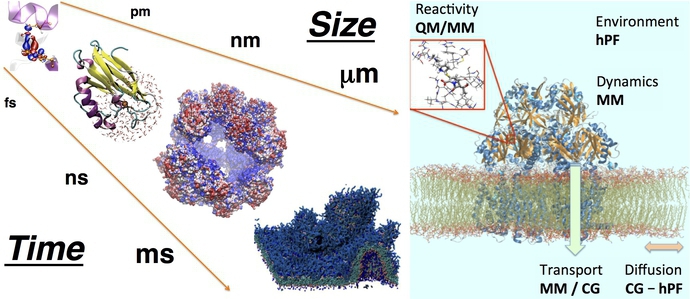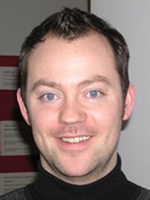To study large-scale responses to local perturbations, we develop methods, software, and virtual-reality tools bridging electronic structure, condensed matter, and the mesoscale. We apply these methods to bio-soft matter and address mechanisms associated with health threats like bacterial drug resistance.

Complex processes produce responses that can be observed at scales spanning several orders of magnitude in time and space. Even though all such events are triggered at the molecular/electronic scale, the description of the phenomena at larger dimensionalities do not require methods at such level of detail.
Multiscale modelling ensures a balanced treatment of phenomena at different scales by employing methods that incorporate progressive levels of approximation, as illustrated by the figure.
In RT2/6, we plan to:
- Develop approaches for fast, accurate treatment of chemical processes in complex environments, including multiple or exotic states of matter, enzymatic pockets, and non-conventional solvents.
- Integrate physics-based methods like electronic-structure theory and molecular dynamics, with machine learning approaches, in collaboration with RT7.
- Implement software to facilitate user interface, including graphic user interfaces for QM/MM-EVB calculations, and virtual reality tools, in collaboration with RT0.
- Explore the molecular driving forces determining self-organisation in soft/biological systems.
- Rationalise the intricacies behind the complex phase diagram of ice,
- Explain the origin of cold adaptation in living organisms.

Michele Cascella
RT2/6-leader
UiO

Bjørn Olav Brandsdal
RT2/6-leader
UiT